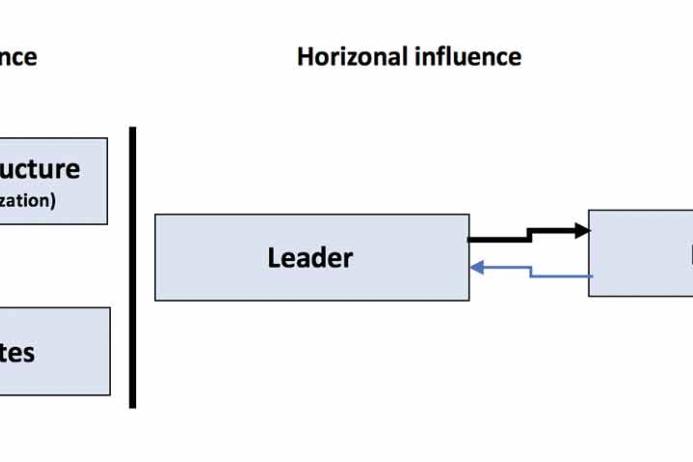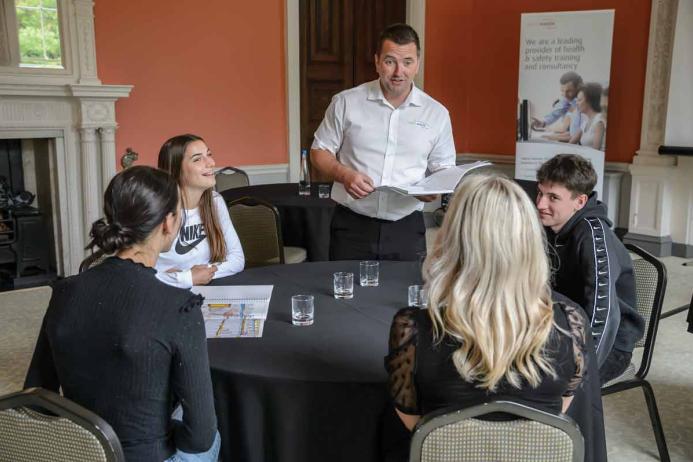Aim to Serve

First published in the February 2024 issue of Quarry Management
Mark Stallard, senior director, Safety Horizon South West, highlights the case for servant leadership in delivering a proactive health and safety culture
For many years forward-thinking organizations have sought to improve their overall ‘safety culture’ through the introduction of a behavioural safety programme with the main aim being to change the mindset of individuals and prevent accidents. To implement such a programme successfully takes time, patience, additional resource, and commitment from all levels.
The well-travelled programme used by many organizations over the years has followed the philosophy of reducing accidents by creating a journey from reactive to dependent, on to independent and finally to interdependency, this last step being perceived by some as the final destination, with a culture where everyone looks out for everyone else. Reaching this was a great accomplishment and was influenced by the main reason for its introduction – to achieve zero accidents.
However, some individuals have suggested that there are limitations with this programme and posed questions such as: Is the ‘zero accidents’ target really achievable? How accurate is it? Do people really report all accidents? Various feedback mechanisms have suggested that zero accident targets are often driven by fear, with some individuals afraid to report anything as they may be disciplined for minor mistakes, or because it will affect the key performance indicators for the whole company.
The fact is, there will be a percentage of employees within most organizations who commit to carrying out good health and safety practices because they see the benefits. There will also be a smaller percentage who carry out good practices because they are told to do it, not because they actually see the benefits – these individuals will do what they believe is necessary when being watched. In addition, there will be a very small minority who have no interest in good health and safety practices regardless of the level of commitment portrayed by management.
Commitment towards zero accidents or interdependency is collective and not just the responsibility of the senior management team.
Step change
Commitment at all levels in improving a proactive health and safety culture is always the first step in achieving successful behavioural change within an organization. Deciding on the best process to achieve this can be confusing and, if not correctly planned, a waste of resource. Various leadership programmes have been tested with one mentioned previously being the most popular.
Transformational, transactional, and servant safety and health behavioural programmes may not be common knowledge to everyone, but they have been and continue to be used by forward-thinking organizations to achieve zero accidents. Like many processes, they all have their strengths and weaknesses and it is all about trying to find the one that works for you.
The latter of the three mentioned above (servant leadership) is my own personal favourite and something that safety and health professionals may wish to consider when presenting their overarching health and safety plan to the board of directors. Servant leadership is based on asking how you can help employees do their job better, listening to what they say, and supporting them in achieving it. Supporting employees in this way creates an engaging environment for people to thrive.
Leadership
Leadership and power are strongly linked. Some people believe power is the capability to influence and shape the behaviours of individuals or groups, whereas leadership may be perceived as the process of influencing others to understand and agree about what needs to be done and how to do it. Leaders effect change as their ultimate goal is to serve.
Traditional power that is driven by position within the business hierarchy uses authority, reward, and discipline to effect change. Although this can have an impact, it may only influence reactive compliance and can sometimes result in resistance from individuals. Without solid relationships people will struggle to work well together, which will directly impact decision-making relating to quality, operations, and especially safety and health. Relationships are built on trust, which can automatically lead to successful engagement.
The focus of ‘servant leadership’ is to humbly serve with expectation, by introducing collective problem-solving amongst the workforce and creating an environment where servant leaders ask, ‘What can I do to make you better?’ One should never underestimate how powerful it can be to allow people to provide the solutions knowing they are being guided and supported in making sure they get it right.

Servant leaders
The best description of servant leadership I have read is this: ‘Servant leadership involves inspirational, moral, and participative-traits not well established in other models. For example, the charismatic and transformational models do not address issues of personal or moral accountability. Conversely, servant leaders are self-reflective and sensitive to others’ needs. Such leaders have a low need for power, a high level of humility, and increased empathy supported by sound communication skills’.
A lot to digest, but still accurate and clear about how it differs from other models. Servant leaders believe that problems and solutions are found within. They acknowledge that people will have invaluable strengths as well as opportunities to improve themselves within a positive environment. Servant leaders are humble, supportive, and guide others to the solution. They have a strong desire to build relationships and reconcile any differences people may have. Servant leaders are shapers and stewards, but still require action and targets to be met.

Getting started
The executives of an organization will want to hear from workers as well as supervisors and middle managers and accepting this feedback and embracing what they hear will be key in influencing change. Please consider some of the following prior to introducing the servant leadership model:
Stage 1 – Commitment
This may sound obvious but is the key first stage. Do not underestimate how powerful it is for the executive board to show visible commitment to creating change within a working environment. To ensure all other levels of the organization are committed, they must believe it is real. Belief and trust may take some time with certain people, but this is still the starting point. This should not be seen as a new initiative but rather as a new way of working.
Stage 2 – Assessment
Perception surveys: Questionnaires can be rolled out to identify personal views on health and safety within an organization. This is focused on individuals responding to leading questions or providing statements which provide feedback which may be essential prior to preparing a bespoke plan.
Observations: Assessing everyone’s commitment towards health and safety is a great way of gauging the current position. This may involve conducting interviews with each level of the organization, monitoring work practices, and challenging documents (risk assessments, inspection records etc).
These exercises will give you an idea of where you think you are (climate) and, realistically, where you actually are (culture).
Stage 3 – Planning
Once the information has been gathered it is important to have structure in whatever you are doing. Creating a plan that has been prepared by all levels of the organization can literally be described as a ‘business plan’.
Set standards, create a framework to work within, let employees know how you are going to help them, and ensure individuals know they are trusted. The plan must be relevant and reflect the issues identified within the assessment process in stage 2.
Stage 4 – Make it happen
Do not lose any emphasis on coaching the followers through the implementation stage, leading initially, followed by shadowing. Encourage them to make mistakes, have a voice, and constantly provide feedback on everything (especially the good work). Remember, you are serving them to make a difference.
Reflection
This article merely touches on some of the features of servant leadership, and potential leaders are advised to research some of the case studies that are available for review (please read the book Accidents to Zero by Professor Andrew Sharman).
Setting an example when it comes to safety and health is key. Great leaders create followers. Great followers take pride in their work and value when they are allowed to influence decision-making.
If successful, followers are focused and committed to their work and add value to their organization. They understand the importance of being part of a team, exchanging ideas, and making health and safety part of their DNA. These people ‘do the job’ every day. Why not use that resource to achieve great things.
Subscribe to Quarry Management, the monthly journal for the mineral products industry, to read articles before they appear on Agg-Net.com


